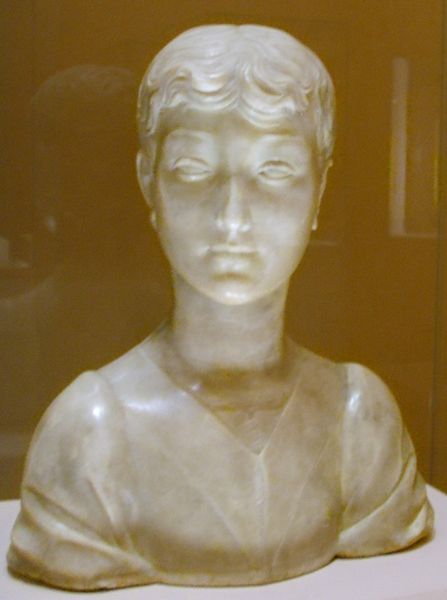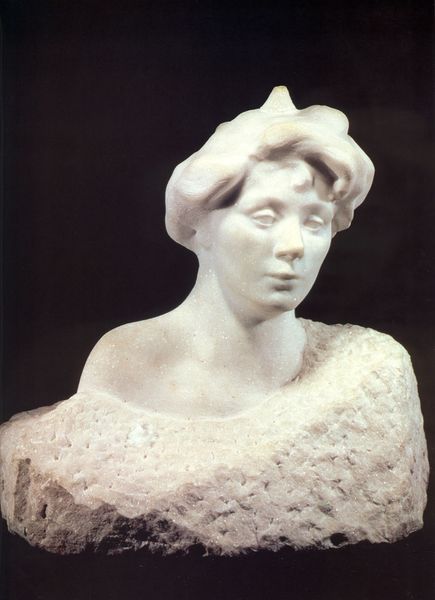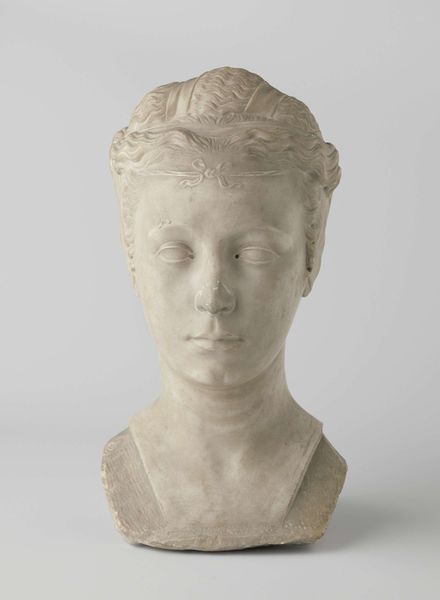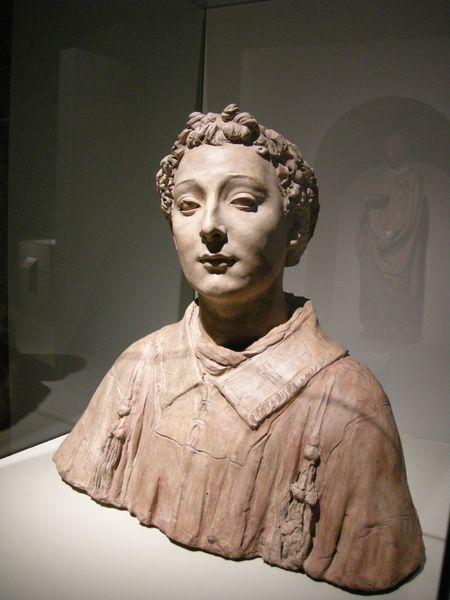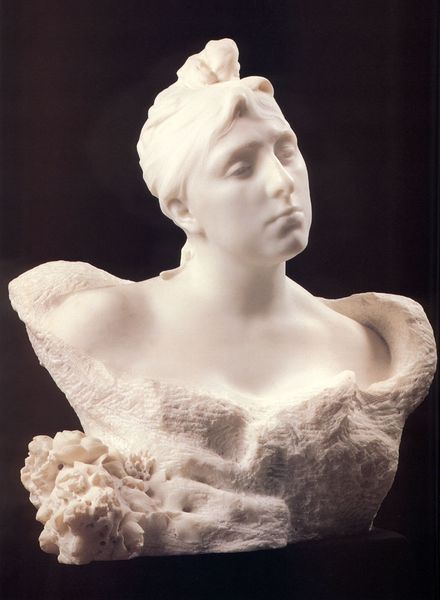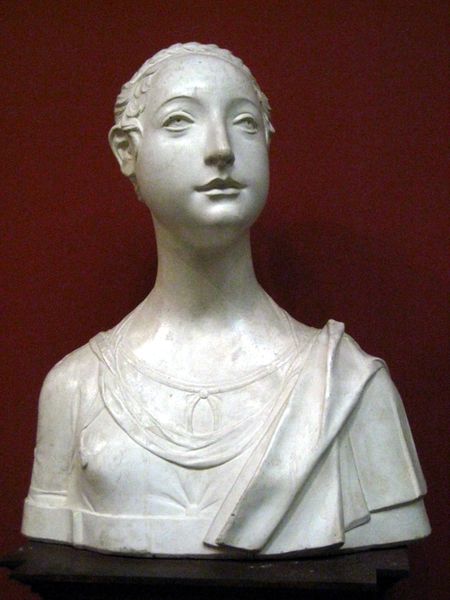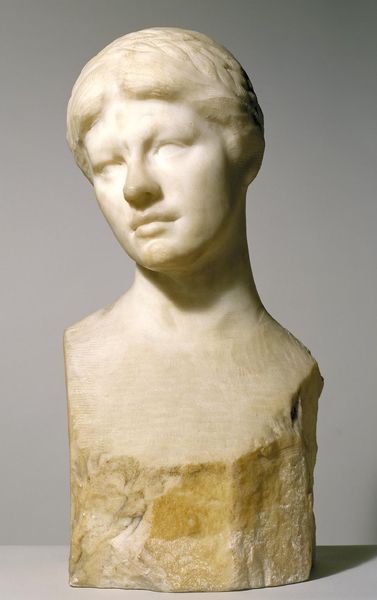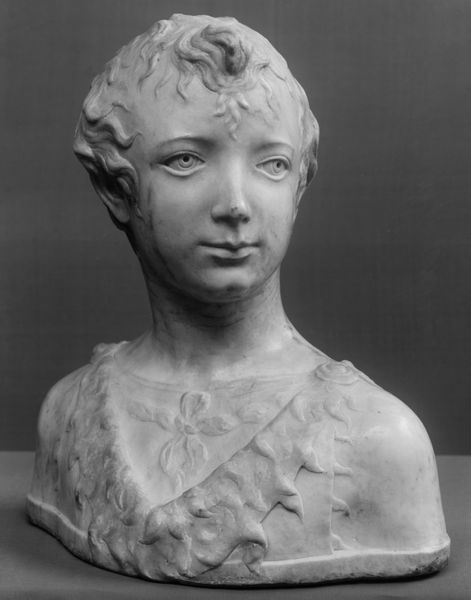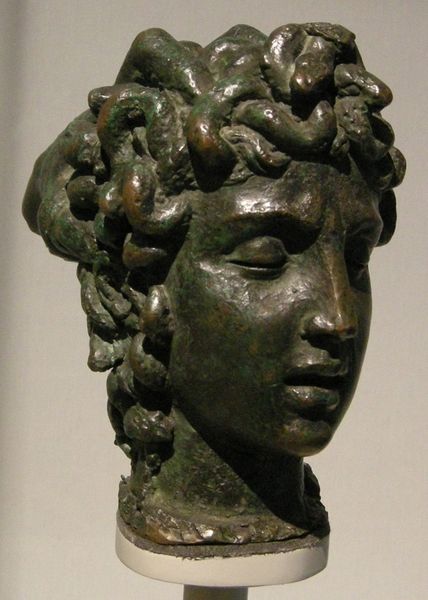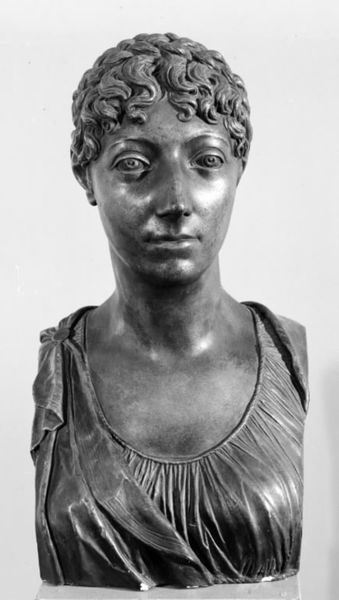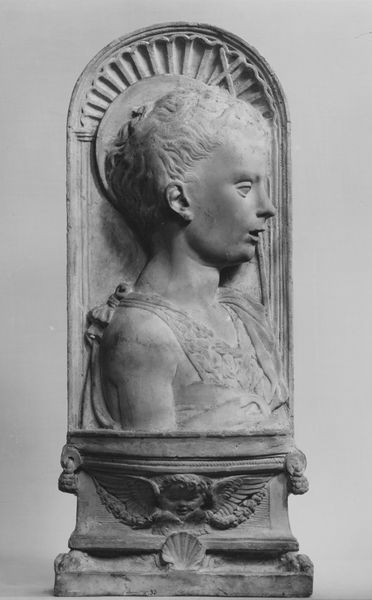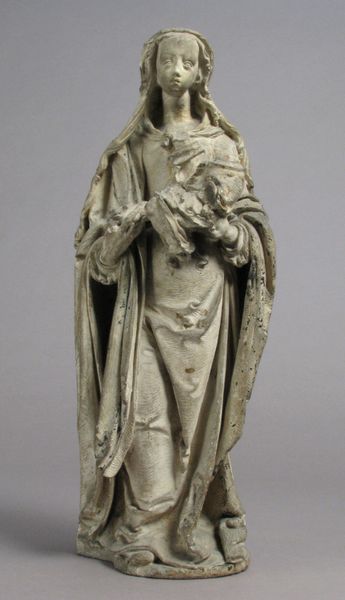
Copyright: Public domain
Curator: Standing before us is Auguste Rodin’s marble bust of Madame Fenaille, completed in 1898, and currently held at the Stedelijk Museum in Amsterdam. Editor: What immediately strikes me is her posture—a sense of demure introspection, her gaze lowered. The roughhewn marble almost makes her appear to be emerging from the very stone itself, a symbolic birth of sorts. Curator: The commissioning of portraits such as these says a lot about the rising bourgeoisie at the turn of the century. To have your likeness immortalized in marble was a profound statement of status and societal position. Editor: I agree. Beyond mere status, Rodin captures something deeper. There's a distinct veil-like fabric at her chest; its delicate lace alludes to intimate attire and suggests the symbolism of private spheres, or secret virtues in some sense. Do you feel the symbolism works against the historicist view? Curator: It enriches it, I'd say. The Fenaille family's patronage would undoubtedly have political and cultural ramifications. Looking beyond the woman herself, the acquisition and display of artworks like this by burgeoning economic elites directly shaped museums and notions of cultural capital as we understand them today. Editor: Interesting—so it's almost an act of defiance against former aesthetic standards! She's in private thought. The flowing marble surrounding her also lends an ethereal air—she becomes part nymph or mythical spirit! Curator: The way Rodin works the marble, particularly in her face, embodies this shift from Neoclassical idealism towards a more psychological rendering. This sculpture exists between honoring tradition, while pushing the boundaries of what a portrait can communicate about the sitter. It moves past mere physical resemblance and gestures to her inner life. Editor: I see that. And those intentional marks within the marble, they add character—symbolizing something very mortal and temporal to a work normally created to defy death and memorialize the deceased in perfect, almost inhuman condition. It is definitely thought-provoking. Curator: Yes, it allows for a more tangible connection between the artwork, the subject, and ourselves. Thank you for lending your iconographical lens. Editor: And thank you for expanding my interpretation within the socio-historical context of this fascinating period in French cultural life.
Comments
No comments
Be the first to comment and join the conversation on the ultimate creative platform.
